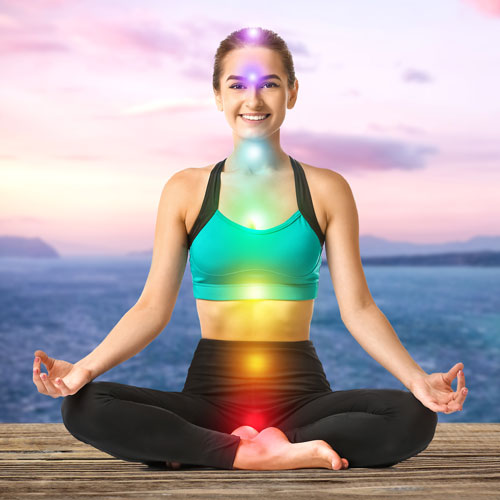Exercising with Scoliosis

When you or a loved one is diagnosed with scoliosis, there are usually a lot of questions surrounding what can and cannot be done when it comes to activity. Exercising with scoliosis is possible. In fact, it is an essential part of keeping the spine strong and your curvature as well managed as possible. This helps prevent unnecessary progression of the spine curve and development symptoms when approached correctly.
Today, we will dive into specific exercises that someone with scoliosis would benefit from. Plus, what general movements and daily activities should be continued and which should be taken off the table.
Movements to Avoid or Modify
Since each scoliosis curvature and individual is unique, there are no black and white rules on what exactly needs to be avoided. Rather, there are some general guidelines to keep in mind. Ultimately, it’s best to discuss what’s best for you with your doctor and/or chiropractor. It’s all about finding a balance between staying active and participating in activities you love while modifying or avoiding certain movements that could aggravate or even damage the spine.
Here are a few of the most common movements to take into consideration when dealing with scoliosis.
- Repetitive functional everyday activities that can aggravate the scoliosis curves, these include
- In general, this equates to continual bending, rotating, and extending- particularly at extreme ranges of motion
- Picking items up from a lower surface such as the floor- particularly if it’s heavy
- Squatting
- Reaching
- Prolonged periods of time in an awkward position
- Sports and other related activities
- Competitive swimming
- Dancing
- Gymnastics
- Horseback riding
- Jumping on a treadmill
- High impact sports like football and rugby
- Running on hard surfaces for an extended period of time
- Specific Exercises
- Sit ups
- Crunches
- Heavy lifting
- Weighted spine twisting
- Activities that can lead to poor posture
- Sleep- particularly on the stomach or a low quality mattress
- Texting
- Watching TV
- Sitting at the computer
- Reading
What You Should Be Doing to Maximize Your Spine’s Function
Before we dive into specific exercises, first let’s review some general guidelines to follow that will help keep your spine as healthy as possible.
- Don’t wait to get treatment.
Continual support and preventative care is always better than seeking treatment once your symptoms or curvature have worsened. Regular check-ups with your doctor and chiropractor can ensure that everything is being done to prevent unnecessary suffering down the road.
- Get a high quality mattress.
Since we spend around a third of our day lying in our beds each day, it’s important to find one that supports your spine. Try to avoid anything too soft or too firm. Most importantly, find a bed with a sturdy frame that supports your spine’s natural curve and doesn’t result in a sagging middle. Additionally, use pillows to maximize your curvature, particularly when lying on your side. For recommended brands and how to sleep in an optimal posture, talk to your chiropractic spine specialist.
- Change positions frequently.
Scoliosis or not, the spine likes to move. Staying stagnant in one position for too long causes stiffness, poor circulation, and other negative outcomes. Taking regular breaks from a particular position is important, especially if you spend a lot of time sitting. If you tend to get immersed in what you’re doing easily, try setting a timer to go off every hour. Then, allow yourself to stand up and stretch for 5 minutes before getting back to your task. This is good for the brain too, so it’s a win-win!
- Participate in regular exercise.
Consistent exercise is hands down one of the best things you can do for any spine, particularly when scoliosis is present. Daily stretching and movement are important for promoting good muscle balance and tissue health. In particular, scoliosis friendly core strength plays a crucial role in spine health. Thus, check out the exercises listed below for ideas on where to get started.
- Live a healthy lifestyle
To live life to the fullest, making the right healthy choices will always help to maximize this. When your overall health is in good standing, you will experience fewer issues related to your scoliosis, such as flare ups, pain, and more. Lifestyle factors to keep in mind for feeling your best include good nutrition, high quality sleep, weight loss or management (if needed), and stress management.
Scoliosis Friendly Exercises
There are particular stretches and strengthening exercises that are recommended for keeping your spine limber and strong with scoliosis. If you’re feeling unsure of where to start with these, it’s always best to consult your doctor or chiropractor first. You can always discuss your options with the specialized team at Bay Area Scoliosis Center in Oakland and Alameda, CA by giving our clinic a call too.
Spine stretching
- Cat-cow yoga stretch
This simple stretch involves getting on your hands and knees. Then, take deep breaths in and out while alternating between arching the back and flexing the back (from a “U” to a sideways “C”) for a minute or more.
- Standing side-stretch
You should notice some asymmetries from side to side with this stretch, so pay attention to your own limits and symptoms and never force it. Bring your hands up overhead with your hands clasped in the center and elbows straight. Then, take turns leaning to one side and holding the stretch. You feel it along the rib cage and sides.
- Child’s pose
This classic stretch feels great on the spine for promoting relaxation. Start on your hands and knees and bring your butt towards your heels and chest toward the floor. You can decide if you want to relax your body with your arms in front or at your side.
- Gentle seated rotation
Sit in an upright optimal posture, either on the ground or in a chair. Gently use your hands to guide your spine into rotation to one side and hold, before switching sides. While some rotation is good, too much rotation can irritate the spine so start slowly and small.
Core strengthening
The muscles that stabilize the spine, pelvis and hips are essential for good spine health and function. However, traditional core strengthening methods aren’t always indicated. Try these options below.
- Pelvic tilts
Mastering the ability to tighten your lower abdominals, also known as the transverse abdominis, is the key to good core strength. This exercise is a great starting place. Lie on your back with your feet flat on the floor and practice tightening your lower abs (belly button toward the spine) as you gently tuck your pelvis as if you had a tail. Practice breathing and holding for 5-10 seconds at a time. You can then progress to more dynamic moves of the arms and legs over time, such as with a dead bug exercise or leg lifts.
- Bird dog
This move helps coordinate trunk and upper body strength all at once. On your hands and knees, lift one arm and the opposite leg off the ground- reaching them away from each other as far as possible before returning and repeating. You can also try a similar movement while lying on your stomach to complete supermans or swimmer type movements.
- Plank
This classic strengthening move is great for full body and core strength. Choose a starting position that you can tolerate while holding the best possible posture, whether that’s on the knees or toes. Strive for keeping the spine as straight as possible and see how long you can hold while keeping good form with a goal of 30 to 60 seconds.
Other
Outside of more specific moves for scoliosis and the spine, general exercise is also great for your body and feeling your best. These include:
- Regular cardio
Cardio is an essential part of any workout routine and will help your spine feel its best. In general, opt for low impact options like walking, an elliptical, cycling, and water aerobics. Try to choose something you enjoy and that you tolerate well. Then, simply keep up with it consistently.
- Lifting
General strengthening exercises are great as well, as long as you are aware of any weaknesses or abnormalities that you need to adjust your routine for. Addressing all of the major muscle groups of the upper and lower body is a great fitness idea- such as bicep curls, tricep extensions, rows, calf raises, squats, and more. Just remember to avoid heavier lifting that can compromise the spine.
How to Maximize Your Exercise Efforts
Exercise is a key factor in managing your scoliosis. However, it’s certainly not the only option and is most often best matched with other treatment modalities. Ideally, you are working with a chiropractor that understands your spine’s unique needs. That way they can continually monitor your spine and make sure you are maximizing your efforts. In addition to exercise, other techniques a chiropractor that specializes in treating scoliosis might use includes:
- Posture education and modifications
- Biomechanical training
- Manual therapy
- Pain management
- Spine adjustments
- Bracing
Proper management of your scoliosis is a must. Finding a medical professional that you trust can make or break your treatment strategy. Finding a chiropractor that specializes in scoliosis management and Chiropractic BioPhysics (CBP) will certainly boost your outcomes. With the evidence based CBP protocol, you can expect outcomes like prevention or better management of symptoms and possible avoidance of more invasive treatments like surgery.
Dr. Cynthis Boyd and her team at Bay Area Scoliosis are CBP certified, utilize the Scoli Brace method, and are ready to help you with all your scoliosis needs. Get in touch with our clinic today and say yes to the best life possible!


